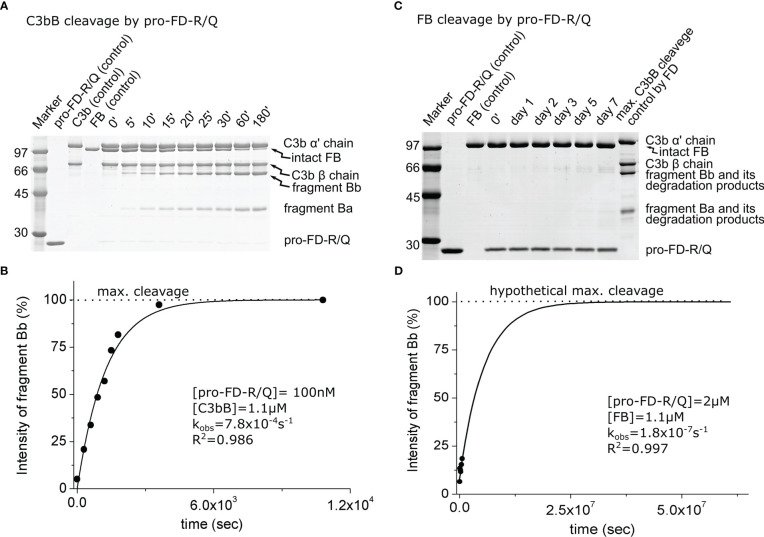Figure 3.
Cleavage of C3bB or FB by pro-FD-R/Q. (A) The cleavage reaction of C3bB (substrate) by pro-FD-R/Q was performed at 37°C and monitored by SDS-PAGE under reducing conditions as described in the Materials and methods. (B) Densitometric analysis was performed to determine the intensities of the FB cleavage product (Bb) bands on the gel in (A). The determined intensities were normalized to the endpoint intensity and plotted as its percentages. The observed rate constant (kobs) was determined by exponential fit as described in the Materials and methods. (C) Cleavage of free FB (substrate) by pro-FD-R/Q was performed at 37°C and monitored by SDS-PAGE under reducing conditions as described in the Materials and methods. The contrast in this panel is enhanced to make the faint band more visible. (D) Densitometric analysis was performed to determine the intensities of the Bb bands on the gel in panel (C). Faint bands probably due to keratin contamination made it difficult to determine reliable intensities. The hypothetical Bb maximal intensity value was derived from a control reaction between FD and C3bB. The determined intensities were normalized to the value of the maximal cleavage control and plotted as its percentages. The observed rate constant (kobs) was determined by exponential fit as described in the Materials and methods. A typical experiment of each type is presented here. Averages and the number of parallels are listed in Table 2.

